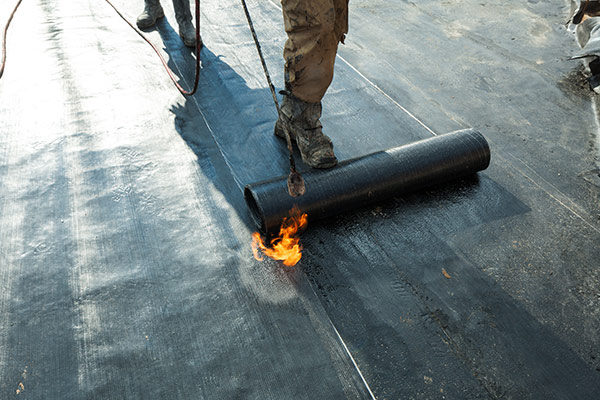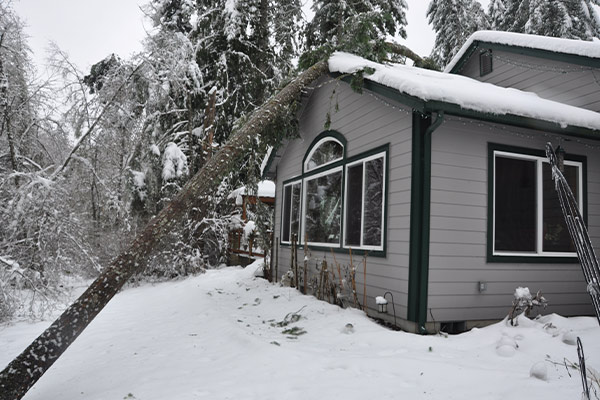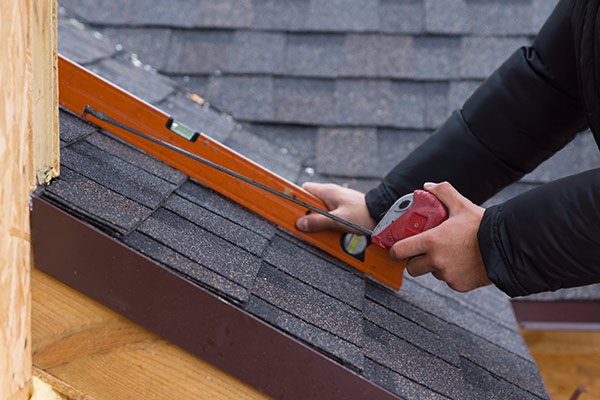Table of Contents
ToggleNeed roofing for a flat roof? Selecting the right roofing system is crucial to protecting your property from the elements and ensuring long-term performance. With several materials available, each offering unique benefits in terms of durability, weather resistance, energy efficiency, and cost, it can be difficult to determine which is best for your needs. This guide breaks down the top flat roofing materials, their average lifespans, and costs so you can make a confident, informed decision.
Popular Flat Roofing Materials
Choosing the right material for a flat roof depends on several factors, including your local climate, overall budget, and the intended use of the building. Some materials are better suited for commercial properties with large surface areas, while others are ideal for residential homes. Each roofing type comes with its own pros and cons related to longevity, maintenance, and installation requirements.
The top choices for flat roofing materials include:
- EPDM
- TPO
- PVC
- Built-Up Roofing (BUR)
- Modified Bitumen
- Metal Roofing
Understanding the features and trade-offs of each material will help you select the most suitable option for your project, ensuring optimal protection and return on investment.
EPDM Roofing
EPDM (ethylene propylene diene monomer) is a synthetic rubber roofing membrane known for flexibility and durability. It withstands temperature fluctuations and can help regulate indoor temperatures, enhancing energy efficiency.
Lifespan: Over 30 years with proper maintenance
Cost: $3.25 to $14.75 per sq. ft.
TPO Roofing
TPO (thermoplastic polyolefin) is valued for its energy efficiency and UV reflection. It’s ideal for warm climates and helps reduce cooling costs.
Lifespan: Up to 25 years
Cost: $5.50 to $8.75 per sq. ft.
PVC Roofing
PVC (polyvinyl chloride) is strong, fire-resistant, and chemically stable. It performs well in diverse weather and is easy to install.
Lifespan: Up to 30 years
Cost: $4 to $12 per sq. ft.
Built-Up Roofing Systems (BUR)
BUR systems consist of alternating layers of bitumen and fabric, topped with stone granules. Known for seamless waterproofing and durability, BUR is a top choice for commercial and industrial buildings.
Lifespan: 15 to 30 years
Cost: $3.50 to $14 per sq. ft.
Modified Bitumen Roofing
Modified bitumen combines asphalt with rubber or plastic polymers. It’s flexible, weather-resistant, and suited for various flat roofing needs.
Installation Methods:
- Torch-applied
- Cold adhesive
- Self-adhesive
Lifespan: 20 to 30 years
Cost: $5 to $9 per sq. ft.
Metal Roofing for Flat Roofs
Metal roofs like standing seam and screw-down panel systems are known for their strength and longevity. Steel and aluminum are popular, while copper adds elegance and develops a patina over time.
Lifespan: 30 to 50 years
Cost: $8 to $18 per sq. ft.
Liquid Applied Roofing Systems
Liquid coatings form a seamless waterproof barrier, ideal for complex or irregular flat roofs. Common types include:
- Polyurethane: Impact-resistant
- Silicone: Weatherproof and ponding water-resistant
- Acrylic: UV-protective and flexible
Lifespan: Over 25 years with proper application
Cost: Varies based on material and labor
Cost Analysis of Flat Roof Materials
Flat roofing costs vary widely. Here’s a quick breakdown:
- EPDM: $3.25 – $14.75
- TPO: $5.50 – $8.75
- PVC: $4 – $12
- Modified Bitumen: $5 – $9
- Metal: $8 – $18
Installation, labor, and complexity impact final pricing.
Environmental Impact and Energy Efficiency
TPO, PVC, and reflective coatings improve energy efficiency by reducing heat absorption. Some liquid-applied systems use low-VOC materials. Insulated flat roofs further enhance indoor comfort.
Recycled materials are also used in many roofing systems, helping reduce environmental impact without sacrificing performance.
Proper Maintenance for Flat Roofs
Flat roofs benefit from regular maintenance to preserve their structural integrity and extend their lifespan. Due to their minimal slope, they are more prone to issues like pooling water and debris accumulation, making a proactive maintenance plan essential. Regular upkeep not only helps preserve the roof’s appearance and functionality but also prevents minor problems from becoming expensive repairs.
Regular Inspections
Flat roofs should be inspected at least twice a year—typically in the spring and fall—to identify early signs of damage. Key areas to assess include the surface membrane, seams, flashing, and drainage outlets. Look for cracks, blistering, loose materials, or pooling water. Catching these issues early allows for timely intervention and helps avoid structural damage or moisture intrusion into the building.
It’s also wise to inspect the roof after severe weather events such as heavy rain, snowstorms, or high winds. Debris like leaves and branches should be removed promptly to prevent clogging drains and adding excess weight.
Common Repairs
Some of the most common issues with flat roofs include water pooling, membrane punctures, surface cracks, and flashing failures. When problems are identified, temporary patching using waterproof sealants can offer short-term protection. However, it’s important to schedule permanent repairs as soon as possible to maintain the roof’s integrity.
Depending on the material, repair techniques vary. For example, EPDM and TPO membranes may be patched using heat-welding or adhesive patches, while built-up roofing may require reapplication of bitumen layers. Annual professional inspections by a licensed roofing contractor are also recommended to detect hidden problems, evaluate past repairs, and provide expert guidance on extending the roof’s service life.
Choose Roofs R Us
Choosing the right material for your flat roof is a long-term investment. Whether it’s cost-efficiency, energy savings, or durability, Roofs R Us can help you find and install the ideal roofing system. With options like EPDM, TPO, BUR, and metal, our experienced team in Blaine, MN ensures your roof performs for decades to come.




